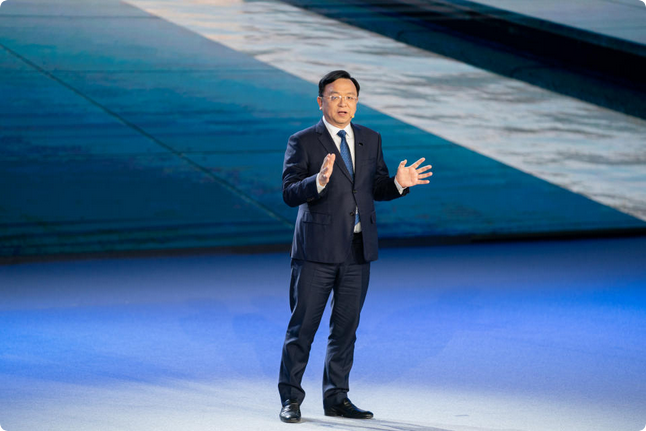Explore the transformative trends redefining global business. This article provides strategic insights into digital transformation, ESG integration, workforce evolution, resilient supply chains, emerging markets, and Industry 4.0 technologies, guiding leaders to navigate market shifts and secure a competitive edge in a rapidly evolving landscape. Perfect for future-focused businesses.
Introduction.
Nowadays, the environment of the global market is volatile and saturated, and new technologies, political situations, and consumers’ preferences influence the competitive position rapidly. Companies in all sectors today expect the unpredictable and uncertain nature in changes in business environments that require attentiveness, flexibility, and anticipation of change. Those organizations that were at one time experienced and set in their ways are now finding that predictability and routine are not simply desirable but sometimes critical for success in the business world. While global operations intertwined interdependence increasing, even local market trends, which may be a great concern, can create far-reaching impacts, forcing organizations to become agile and to constantly align specific strategies and relations in an effective way.
Seven key trends that are shaping the business and industrial landscape are considered in this article to help companies better understand how these changes may facilitate the optimization of their positioning strategies. In today’s business world, these trends are not only setting out the conditions for competition but are also actually cementing the very idea of the firm as a flexible and responsive organisation for the contemporary age. If these and other changes are recognised and understood, then those leaders in organisations can prepare for their organisations not just to exist but to thrive in this emergent environment and build the foundations on which future success can be constructed in a world that is becoming increasingly connected.
1. The Digital Transformation Imperative: Rethinking the Concept of Business and Customers Relationship.
The digital change experience has therefore changed from being a competitive weapon to being a business necessity that characterizes current commerce processes as well as consumer interactions. Advanced technologies in artificial intelligence, machine learning, and digital analytics are pushing the wheel of digital transformation into a new phase of effectiveness, flexibility, and customer orientation. That is why companies are redefining classical business thinking and turning to the concept of digital ecosystems that ensure effective management of routine work, automation of a set of activities, and the use of up-to-date analytics data on the operation. Therefore, through the use of these technologies, various businesses are in a position to respond to the ever and changing market needs and hence become more flexible. Flexible and robust functional model,
Whereas, new and emerging technologies are significantly changing the way businesses engage and maintain their customers. Originally, this concept of personalized services is all about luxury, but as the availability of more data to be used pushes businesses forward, personalized services became more of a norm that resonates with the individual consumer. Digital applications extend the presently available options of interacting with a customer and enable brands to foster deeper relationships with their customers, thus boosting business revenues. Businesses that have adopted change further benefit from satisfied customers and become more competitive through the use of digital resources to predict, improve, and create market environments better than rivals. Since the modern world has placed an increased focus on developing a digital presence, the capacity to manage and innovate in this evolution will surely determine sustainability within a firm’s competitive landscape.
2. Sustainability and ESG: Managing the Firm, Business, Environment and Sustainability, and Business and Community Responsibility.
Environmental goals and ESG projects have now emerged as the prerequisites for successful business management in the twenty-first century due to growing consumer, investor, and regulatory concerns. Climate conditions, restricted accessibility to resources, and social justice now form the major environmental velocity as leaders transit from money-oriented missions to meaningful missions that blend revenue together with the planet. By implementing sustainability in business strategy/self, organizations improve brand reputation, attract value-conscious consumers, and ensure they meet sustainable standards, which set the organization up for sustainability in today’s competitive world. Today’s market leaders are discovering that sustainable management is not only the fulfilment of ethical responsibilities but also the acquisition of new opportunities and the development of innovation.
Further, it is becoming apparent that ESG standards are changing the face of investment, as investors seek to buy stakes in organizations with sustainable values of the environment and society. The corporate entities that embrace the adoptions of ESG make them more compelling to investors because of their value as signals of sustainability. ESG integration is now a key foundation for a company’s strategic plan as it indicates accountability, transparency, and a forward-looking mindset, key factors for business success in the current global environment. This section will look at how some of the leading companies are now integrating sustainability into your operations and business model, and how corporations are using sustainability not only as an important way to appeal to customers but as a key constituent of what they are and what they do.
3. The Future of Work: Managing the Evolution of Workforce and Blended Solutions.
This future of work has already been experienced and has impacted the way different organizations manage employees and output in the midst of more challenges. Covid-19 pandemic significantly disruption of working practices and accelerated adoption of remote and hybrid working, which changed the perception of an employee experience. While embracing flexibility, companies must perform the delicate task of improving the quality of work- life balance to allow for working from home while ensuring workers can be connected and collaborative. Today’s organisations have a new reality – the highly flexible and often non-employee workforce brought about by the digital revolution, growth of gig economy, and freelancing.
Indeed,ublishing the corporate workforce solutions, companies can transform their frameworks fully and adapt to the context of digital work through digital collaboration tools and upskilling and reskilling initiatives. To put it more specifically, the heads of corporations are starting to invest in data analysis for the purpose of evaluating work performance, employee satisfaction rate, and engagement with the goal to create a workforce ready for new risks. Also, in the war for talent, it is crucial to offer flexible, or even entirely new, hybrid work models. As such, a new workforce model requires creative approaches towards management, communication and the acquisition of human capital, which gives rise to a new benchmark of workplace satisfaction and productivity that is coherent with modern economical expectations.
4. Global Supply Chain Reinvention: Rethinking the Concept: From Vulnerabilities to Resilience.
Global disruptions that have occurred in recent times have revealed the problems associated with the conventional systems of supply chain management, hence forcing companies into the search for better ways of achieving supply chain success. Another for-purpose strategy is involved supply chain continuity has become a major concern as firms aim at minimizing reliance on a given supplier, adding more sources, and moving production closer to the market where possible. Alongside improved interactions with clients thanks to AI, utilizing such advanced technologies as blockchain, AI in producing forecasting, and other solutions that allow for more efficient collaboration between companies and IoT based monitoring one can develop the supply chain not only effective but also flexible enough to respond to different shocks. By adopting the resilient supply chain, risks can be reduced, and supply chain and service delivery can sustain supply disruptions in volatile environments can be managed.
This reinvention of supply chains also includes supply development and the emergence of sustainability in sourcing, including ecological perspectives on sustainability and supplier reliability. With the issue of supply chains being stretched and global, risk management and flexibility define the competitive advantage. This section will delve deeper into discovering the manner in which enterprises are using digital technologies and partnerships in creating solidistic, efficient, and greatly transparent supply chain structures capable of withstanding the existing today volatile environment. A more robust supply chain management system helps firms to address a problem proactively so that it does not affect the chain adversely and so tining and quality is maintained.
5. The Rise of Emerging Markets: Multilateral Economy: Opportunities & Challenges.
Strong growth has been expected from the new economy countries in Asia, Africa, and Latin America, and it will continue to hold a promise for growth and diversification in the next decade. These regions prove promising for companies as a market for growth via fresh consumer segments, investments, and production sites since the markets of older developed states are stagnant at best. But, the implementation in these markets also has its own issues, such as issues related to legal, cultural, and infrastructure. A firm needs to adequately understand these issues to strive and succeed in the environment and has to adapt to the local culture and policies.
Localization is, therefore, one of the critical success factors for companies who wish to expand to emerging markets. Thus, the success of the attempt is about going beyond the mere implementation of the Western management ideas; rather, it calls for the knowledge of the culture and market and the legal conditions in Uzbekistan. Any company that seeks to successfully operate in a foreign country, redesigns its products and services, its advertising campaigns, and its business policies in a way that is friendly to the local customers will attain competitive advantage in these high-growth regions. This section will focus on an analysis of case studies of organisations that have successfully implemented strategies for conquering emerging markets and outline a pattern for those seeking to do the same in this new multipolar world economy. Emerging markets are a threat in a way that is now traditional in an increasingly global economy, but they are also a new opportunity for the ambitious corporation.
Conclusion.
This paradigm shift has been christened Industry 4.0 – characterized by the marriage and integration of fourth generation technologies like the Internet of Things, blockchain, artificial intelligence, and robotics within industries. It has supported manufacturing, logistics, and service delivery, providing increased automation, accuracy, and informational integration. Industry 4.0 is a driving force for the enhancement of productivity, achieving cost economy, and operating efficiency, leading to the procurement of competitive advantage in the digitized business world. The need for agility and the timely adaptation of new technologies have become essential for firms that wish to steer, not be propelled by the industry.
Besides the operational improvements, Industry 4.0 enables a company to design and launch higher value services and goods that address the customers' needs and expectations in a timely and effective manner. Business intelligence enhanced by utilising artificial intelligence and machine learning provides a great opportunity to conduct effective and profitable market forecasting, implement effective strategies in terms of resource allocation, and many others, as well as the acceleration of the cycles driving innovation. This section will analyse how global companies in diverse industry fields are using Industry4.0 smart newValueing old business structures and developing new businesses. With the advent and progress of technology in the marketplace remaining relevant in the progressed technology, it will be very paramount for organizations that would want to compete in the dynamically changing global market environment.


.jpg?locale=en)























